How to Optimize Your E-commerce Platform for Maximum Sales
In the competitive world of online retail, optimizing your e-commerce platform is essential for maximizing sales and enhancing customer experience. A well-optimized online store not only attracts more visitors but also converts them into loyal customers. Here are some key strategies to improve your e-commerce platform’s performance and boost your sales.
![[object Object]](https://clipl-web1.sgp1.cdn.digitaloceanspaces.com/images/clu85letv00534irzg11i1avz.png)
Streamlined
Navigation: Ensure that your website’s navigation is intuitive and user-friendly. Categorize products logically and include filters and search functions to help customers find what they’re looking for quickly. A well-organized site reduces friction and keeps customers engaged.
Responsive Design: With a growing number of shoppers using mobile devices, a responsive design is crucial. Ensure that your e-commerce site looks and functions seamlessly on desktops, tablets, and smartphones. Test your site’s mobile performance regularly to provide an optimal experience across all devices.
Fast Loading Times: Speed is a critical factor in user experience. Optimize your website’s performance by compressing images, minimizing code, and using Content Delivery Networks (CDNs). Faster loading times improve customer satisfaction and reduce bounce rates.
![[object Object]](https://clipl-web1.sgp1.cdn.digitaloceanspaces.com/images/clw7br1ug003e4crz8w6ygj2t.png)
2. Optimize Product Pages
High-Quality Images and Videos: Use high-resolution images and videos to showcase your products. Provide multiple views and zoom-in options to give customers a clear idea of what they’re purchasing. Including videos can also help demonstrate product features and benefits.
Compelling Product Descriptions: Write detailed and persuasive product descriptions that highlight key features, benefits, and unique selling points. Use bullet points for easy readability and include relevant keywords to improve search visibility.
Customer Reviews and Ratings: Display customer reviews and ratings on product pages to build trust and credibility. Positive reviews can influence purchasing decisions, while negative reviews provide valuable feedback for improvement.
![[object Object]](https://clipl-web1.sgp1.cdn.digitaloceanspaces.com/images/clu85m59u00594irzbiewgpyn.png)
3. Implement Effective Call-to-Actions (CTAs)
- Clear and Actionable CTAs: Use clear, compelling CTAs to guide customers towards desired actions, such as “Buy Now,” “Add to Cart,” or “Sign Up for Discounts.” Ensure that CTAs are prominently placed and stand out visually.
- Urgency and Scarcity: Create a sense of urgency with CTAs that highlight limited-time offers or low stock levels. Phrases like “Limited Stock” or “Ends Today” can encourage customers to make a purchase sooner.
4. Utilize Personalization
- Personalized Recommendations: Leverage data and analytics to provide personalized product recommendations based on browsing history, past purchases, and user behavior. Personalized suggestions can increase the likelihood of additional sales and improve customer satisfaction.
- Targeted Email Campaigns: Segment your email list based on customer behavior and preferences. Send personalized emails with product recommendations, special offers, and exclusive discounts tailored to individual interests.
![[object Object]](https://clipl-web1.sgp1.cdn.digitaloceanspaces.com/images/clu85g32c004p4irz90k4e9u5.png)
5. Optimize Checkout Process
- Simplify Checkout: Reduce the number of steps in the checkout process to minimize cart abandonment. Offer guest checkout options and minimize required fields to make the process quick and hassle-free.
- Multiple Payment Options: Provide a variety of payment methods, including credit/debit cards, digital wallets, and alternative payment options. Offering multiple payment choices can accommodate different customer preferences and increase conversion rates.
- Security and Trust Signals: Display security badges and trust signals during the checkout process to reassure customers that their payment information is secure. Clear return policies and customer support options can also enhance trust.
6. Leverage SEO and Content Marketing
- On-Page SEO: Optimize product pages, category pages, and blog content with relevant keywords, meta descriptions, and header tags. Improved search engine rankings can drive more organic traffic to your e-commerce site.
- Content Marketing: Create valuable content related to your products or industry. Blog posts, how-to guides, and tutorials can attract visitors, establish your brand as an authority, and drive traffic to your online store.
![[object Object]](https://clipl-web1.sgp1.cdn.digitaloceanspaces.com/images/clzi5t35z006l32qgev2w4su6.png)
7. Analyze and Iterate
Monitor Performance Metrics: Use analytics tools to track key performance indicators (KPIs) such as conversion rates, average order value, and cart abandonment rates. Regularly review these metrics to identify areas for improvement.
A/B Testing: Conduct A/B tests on various elements of your e-commerce site, such as product page layouts, CTAs, and promotional banners. Testing different variations helps determine what resonates best with your audience and drives higher sales.
Customer Feedback: Gather feedback from customers through surveys, reviews, and direct interactions. Use this feedback to make data-driven improvements to your site and enhance the overall shopping experience.
Conclusion
Optimizing your e-commerce platform involves a combination of user-centric design, strategic marketing, and continuous improvement. By focusing on enhancing user experience, optimizing product pages, and leveraging personalization, you can drive more traffic, increase conversions, and maximize sales. For more insights on optimizing your e-commerce strategy, visit CloudActive Labs India Pvt Ltd or contact us at [email protected].























